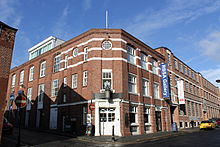
Sir John Everett Millais, 1st Baronet was an English painter and illustrator who was one of the founders of the Pre-Raphaelite Brotherhood. He was a child prodigy who, aged eleven, became the youngest student to enter the Royal Academy Schools. The Pre-Raphaelite Brotherhood was founded at his family home in London, at 83 Gower Street. Millais became the most famous exponent of the style, his painting Christ in the House of His Parents (1849–50) generating considerable controversy, and he produced a picture that could serve as the embodiment of the historical and naturalist focus of the group, Ophelia, in 1851–52.

Sir Edward Coley Burne-Jones, 1st Baronet, was an English painter and designer associated with the Pre-Raphaelite Brotherhood's style and subject matter.

Sir Martin Archer Shee was an Irish portrait painter. He also served as the president of the Royal Academy.
William James Bloye was an English sculptor, active in Birmingham either side of World War II.

Sir Frank William Brangwyn was a Welsh artist, painter, watercolourist, printmaker, illustrator, and designer.

Sir Charles Lock Eastlake was a British painter, gallery director, collector and writer of the 19th century. After a period as keeper, he was the first director of the National Gallery. From 1850 to 1865 he served as President of the Royal Academy, succeeding Martin Archer Shee in the role.

Frank Cadogan Cowper was an English painter and illustrator of portraits, historical and literary scenes, also described as "The Last Pre-Raphaelite".

William Gear RA RBSA was a Scottish painter, most notable for his abstract compositions.

The Royal Society of Portrait Painters is a charity based at Carlton House Terrace, SW1, London that promotes the practice and appreciation of portraiture art.

Joseph Edward Southall RWS NEAC RBSA was an English painter associated with the Arts and Crafts movement.
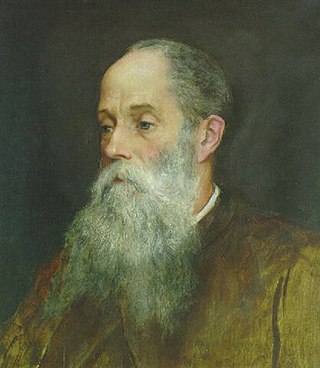
John Roddam Spencer Stanhope was an English artist associated with Edward Burne-Jones and George Frederic Watts and often regarded as a second-wave pre-Raphaelite. His work is also studied within the context of Aestheticism and British Symbolism. As a painter, Stanhope worked in oil, watercolor, fresco, tempera, and mixed media. His subject matter was mythological, allegorical, biblical, and contemporary. Stanhope was born in Cawthorne, near Barnsley, Yorkshire, England, and died in Florence, Italy. He was the uncle and teacher of the painter Evelyn De Morgan and encouraged then unknown local artist Abel Hold to exhibit at the Royal Academy, which he did 16 times.
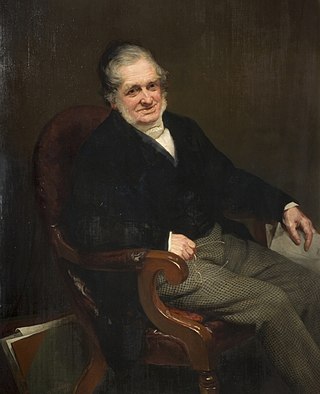
Samuel Lines was an English designer, painter and art teacher, and an early member of the Birmingham School of landscape painters.

Arthur Joseph Gaskin RBSA was an English illustrator, painter, teacher and designer of jewellery and enamelwork.
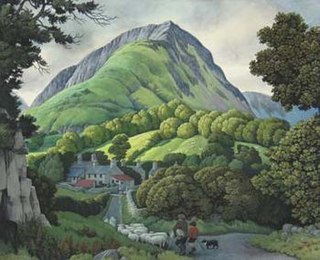
Norman Neasom RWS, RBSA was an English painter and art teacher. He grew up on Birchensale Farm in Brockhill Lane on the outskirts of Redditch, Worcestershire. On finishing his schooling at Redditch County High School, aged 16, he was given a scholarship at the Birmingham College of Art where, from 1931, he worked under Bernard Fleetwood-Walker, Harold Holden, Henry Sands, Michael Fletcher and William Colley.
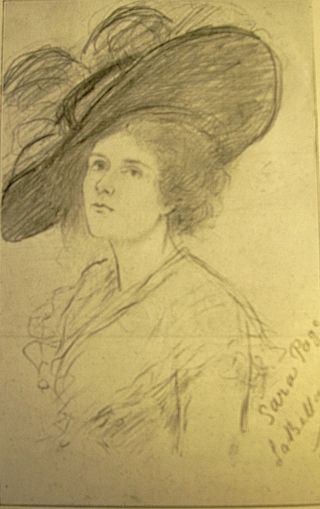
Sara Wells Page (1855–1943) was a British artist, portrait and figurative painter, of the Victorian and Edwardian period. During her lifetime she was widely exhibited at Parisian salons and British galleries, including the Royal Academy of Arts. Three of her paintings are in Wolverhampton Art Gallery.

William John Wainwright PRBSA (1855–1931) was a painter who spent most of his life in Birmingham, England.

Henry Harris Lines was a landscape artist and archaeologist, and the eldest son of Birmingham artist and drawing master Samuel Lines (1778–1863). There are a number of Henry's works stored in the permanent collections of various provincial museums and art galleries including Birmingham Museum and Art Gallery, Worcester City Art Gallery and Museum and the Royal Birmingham Society of Artists (RBSA) Gallery. As well as at the Birmingham Society of Arts, Henry also exhibited at the Royal Academy, British Institution and Society of British Artists. The Wright family's patronage of the Lines family is also evident in William Rostill Lines's sculpture Bust of Mr. Thomas Wright Hill that was exhibited at the Birmingham Society of Arts Exhibition in 1829.

William Arthur Breakspeare was an artist from Birmingham, England, the son of John Breakspeare, a flower painter working in the Birmingham japanning trade.
Harold Herbert Holden RWS, ARCA (Lond.) was an English artist from Birmingham, active in the mid-20th century.
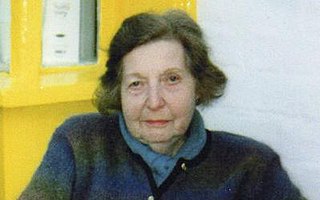
Katherine "Kate" Mary Fryer, RBSA, was an English artist known for her wood engravings. She was the winner of the Hoffman Wood (Leeds) Gold Medal in 1969.
